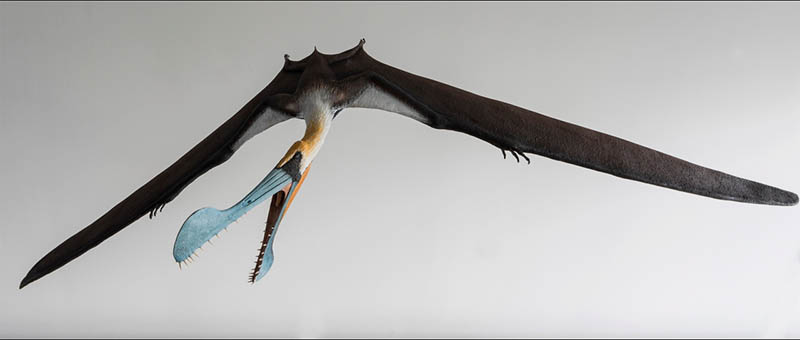Tropeognathus Wellnhofer, 1987. 1:10 scale reconstruction of one of the largest pterosaurs ever. M[UV]HN.
Pterosaurs were a group of flying reptiles different from dinosaurs, although related to them. They were the first group of vertebrates that developed the capacity to actively fly so pterosaurs dominated the skies almost all the Mesozoic era, a long time before birds. Tropeognathus was one of the largest known pterosaurs. It lived 150-200 million years ago, at the beginnings of what it is called the Cretacic period. By that time, South America and Africa which had been forming part of the same land mass, started to diverge into two different continents, giving rise to the Atlantic ocean. Tropeognathus was a pterosaur with a lifestyle strongly tight to sea. It lived in coastal environments and had a diet based on fish. Gliding over the surface of the water with the help of its wide wings, it hovered over its prey capturing from the air with its large jaws. To facilitate this task, it counted with conic and elongated teeth facing the exterior, as well as two keel-shaped ridges at the end of the upper and lower jaws, respectively. At the M [UV] HN remains of different exemplaries are deposited. The design and reconstruction of the models has been based on the species Tropeognathus mesembrinus Wellnhofer, 1987, found in Brazil.


















